Types of Locks for your door
Mortice Locks
Are you looking to install new locks on your doors to enhance your security system? If so, then you must consider mortice locks. They are one of the most common and effective locks out there. And this is why many insurance policies specifically require that you install a British Standard BS3621 mortice lock.
What are mortice locks?
A mortice lock, by definition, is a kind of locking mechanism which requires cutting a pocket into the door in order for the lock to be installed. The pocket or the space in the door to install the lock is known as a mortice. And this is where the lock derives its name from. Mortice locks are a popular choice for many residential and commercial users due to their resilience and reliability.
How do they function?
 The basic functioning mechanism of mortice locks is simple enough to understand. The lock consists of a deadbolt and a lever mechanism. The set of levers prevent the bolt from moving. When a key is inserted in the lock, it straightens the levers and creates a slot which allows the bolt to slide in order to lock or unlock the door.
The basic functioning mechanism of mortice locks is simple enough to understand. The lock consists of a deadbolt and a lever mechanism. The set of levers prevent the bolt from moving. When a key is inserted in the lock, it straightens the levers and creates a slot which allows the bolt to slide in order to lock or unlock the door.
The level of security a mortice lock can provide depends on its quality and the number of levers it has. The levers are usually present in an odd number so that the same key can be used to unlock the doors from both sides. Usually, the two most common classifications of the mortice lock are based on the number of levers it has. This includes:
3-lever lock: As the name suggests, the 3-lever lock has three internal levers to unlock the door. Since it is relatively easier to open, the 3-lever lock is used on low-security applications, like internal doors. There are fewer key combinations available for the 3-lever locks so it might be dangerous to install them on the front door since many keys would have the ability to unlock the door.
5-lever lock: When we talk about British Standard BS3621 mortice locks, we are usually referring to a 5-lever lock. Many homeowners are required to install 5-lever locks, by their insurance companies, to ensure enhanced security. The five internal levers make it difficult for criminals to pick the lock using traditional means while the wide range of available keys reduces the chances of other keys opening the door.
Which doors require the mortice locks?
Since the mortice locks require a pocket or a mortice for installation, they can be only fitted in wooden doors, whether it is a solid wooden door or a glass-plated wooden door. You cannot install a mortice lock on a UPVC door. For that, you would require a Euro lock mechanism.
The size of a British Standard mortice lock may differ depending on the door in which the lock is installed. For instance, smaller size British Standard locks are installed in internal doors whereas the large size BS3621 locks are used in entrance doors.
The different kinds of mortice locks
When you’re out shopping for mortice locks, here are the two types you need to consider:
Mortice deadlock: The deadlock contains only one key-operated bolt used to lock the door. You may pair it with a separate latch mechanism. The mortice deadlocks are used on doors which need to be opened and closed without being locked. It is simple and convenient.
Mortice sash lock: The sash locks combine a deadbolt and a latch in a single mortice box. This way, the door is on latch whenever it is closed and can be further locked for additional security. It is ideal for multipurpose usage.
The advantages of Mortice locks
You may consider installing Mortice locks because:
- The mortice box in a British Standard lock is composed of anti-drill plating.
- The deadbolt consists of hardened steel spindles to prevent cutting.
- They are difficult to penetrate because of how they’re installed.
Five-lever mortice deadlock
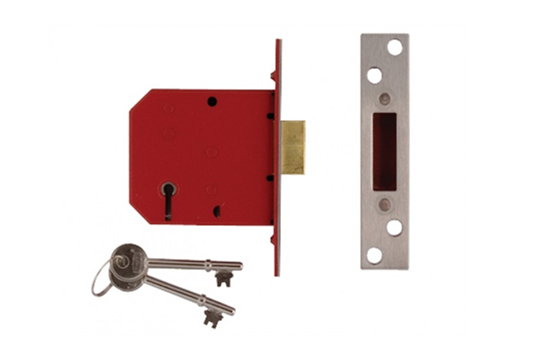
Five-lever mortice deadlock conforming to BS 3621
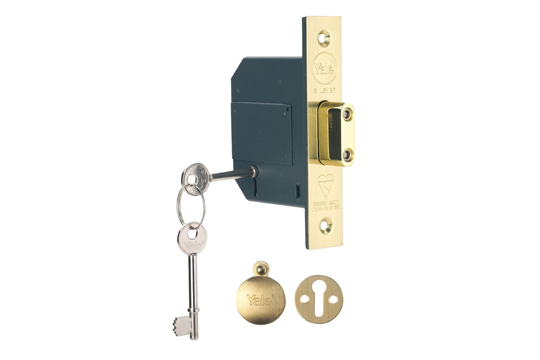
Key-operated multi-point locking system
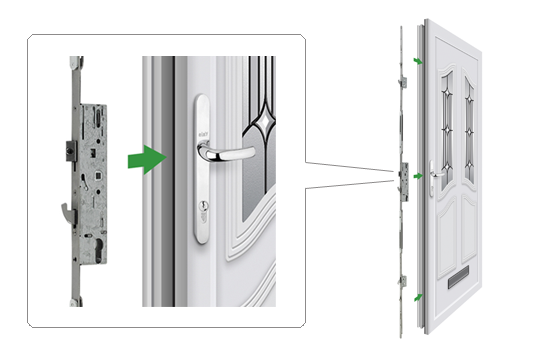
Euro Locks
Thinking about which lock to install in your door to maximize the security of your premises? Think no further. Here’s Key4Freedom’s guide to everything you need to know about euro locks.
What exactly are euro locks?
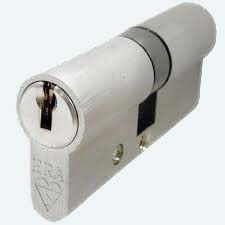 Euro profile cyclinders, or euro locks as they’re commonly known, consist of a single cylindrical mechanism that can be easily fitted into the door. Euro locks require a specially designed unique key structure to lock or unlock the door. Euro locks are appreciated due to their simple, yet effective structure.
Euro profile cyclinders, or euro locks as they’re commonly known, consist of a single cylindrical mechanism that can be easily fitted into the door. Euro locks require a specially designed unique key structure to lock or unlock the door. Euro locks are appreciated due to their simple, yet effective structure.
The easy-to-install nature of the euro locks makes them ideal for UPVC doors and commercial establishments where the owners may require frequent rekeying. Euro locks allow the cylinder to be easily unscrewed and replaced without changing the boltwork hardware.
How do they function?
Euro locks commonly utilize the pin tumbler mechanism to lock or unlock the door. Inside the lock are pins of various sizes which need to align in order to unlock the door. And only the right kind of key can properly align those pins to do that.
Which doors are the euro locks suitable for?
One of the major advantages of using a euro lock is that it can be installed on many kinds of doors. Whereas other locks like the mortice locks and night latches can only be installed on wooden doors, the euro cylinder locks can be used in both the wooden and UPVC door.
If you want to ensure maximum security on external wooden doors, you need to install the euro locks in combination with a mortice case or a multi-locking system.
The single euro lock is also commonly used to secure shutters. For instance, the shutters for commercial establishments and garages rely on single euro locks for security.
Lock snapping and anti-snap locks
One of the potential weaknesses of the traditional euro lock is that they can be easily violated by snapping the cylinder into two. And this does not even require a particularly skilled person with specialist tools. Anyone can walk up to the door and grab the protruding end of the lock with a common tool to snap it. It is a common practice in burglary and one that requires your utmost attention.
Fortunately, anti-snapping euro locks are available. Even if the burglar is able to snap one half of the lock, the other half remains firmly in place and the door remains securely shut. Good quality euro locks contain a stainless steel anti-drill protection to prevent burglars from drilling a hole into the remaining lock inside.
An easier way to prevent lock snapping is to hire a professional locksmith. The lock must always be in level with the surface of the door and should not protrude out. And this can only be done by a skilled locksmith. Expert installation leaves no space for the burglar to hold on to in order to snap the lock.
Advantages of euro locks
- They are extremely easy to install and remove. The cylinder can be changed without any alteration in the bolt work hardware. All you need to do is to loosen a screw and slide the cylinder from the bolt work.
- The anti-snap varieties allow the door to be unlocked from the inside even when the other half of the lock is removed by a burglar.
Rim Cylinders and Night Latches
When you’re out shopping for locks, you need to know exactly what you’re looking to buy. You need to know exactly what you want and what will work best for your requirements.
This is why we, at Key4Freedom, have created this brief guide to teach you how rim cylinders and night latches work and how they are both used as part of a single mechanism to ensure maximum security.
What is the night latch mechanism?
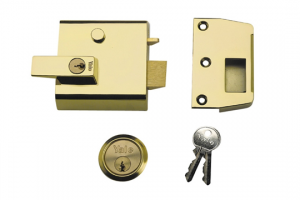 Although rim cylinders and night latches are fundamentally different kinds of locks, they are part of the same locking mechanism. They are used together to maximize functionality, ease of use, and security.
Although rim cylinders and night latches are fundamentally different kinds of locks, they are part of the same locking mechanism. They are used together to maximize functionality, ease of use, and security.
The rim cylinder and the night latch are installed on either side of the door and are combined together through a small metal arm. The night latch, which is installed on the external face of the door, requires a key to operate. On the inside of a door is the night latch. When the key is turned in the rim cylinder, it activates the night latch through the metal bar to unlock the door.
How does the night latch mechanism function?
A standard night latch mechanism contains the following components.
Rim cylinder
Installing the night latch requires a hole in the door and the rim cylinder is placed through the hole. The metal arm bar protrudes through the other end of the door and goes into the main lock body.
Mounting plate
The mounting plate holds the lock in place as it allows both the outer rim cylinder and the inner lock body to be screwed into the door and held in place.
Lock cam or body
The main body of the lock contains most of the functional features. Two of the most common features include the knob which can be turned to unlock the door and the latch bolt which can be activated through the knob on the inside and the rim cylinder lock on the outside. Some locks also contain a slide function which enables the users to deadlock the bolt from the inside or let it stay open for convenience.
Which kinds of doors require the night latch?
The night latch mechanism can only be installed on wooden doors and is commonly used as a latch. You can either install the night latch on its own or pair it with other locks in order to maximize security.
Installing the night latch is relatively simple and only requires a hole to fit in the rim cylinder. However, these locks are easy to manipulate. This is why you need to pair it with a mortice lock which would require a separate pocket, or mortice, to be created within the door.
Advantages of a night latch
- Night latches are fairly reliable as they require a key, rather than a handle to unlock the door from the outside.
- The night latch is designed for simplicity and convenience. Its latch bolt allows the users to slam the door shut from the inside, rather than turning the key.
Categories: Our Services